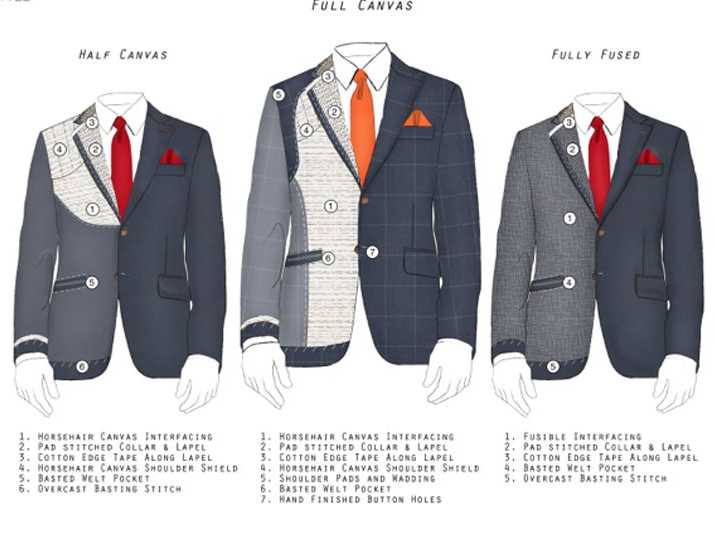BS”D This is Part 5 of the DIY Home Shatnez Lab Series where we try to identify parts of garments that may contain shatnez.
Suits
Thankfully information about how a suit is constructed is easily available on the Internet. A high-end well-constructed suit contains a lot of underlinings or interfacings that are hidden under the suit inner lining. The U.S. Federal Trade Commission does not require labeling every piece of material that goes into making a complete garment.
Exceptions to the fiber disclosure requirement
Some parts of a textile or wool product don’t have to be counted for labeling purposes even if they are made of a fibrous material. These include trim, linings (unless used for warmth), small amounts of ornamentation and the threads that hold the garment together, although the label may need to disclose that the stated fiber content is exclusive of decoration or ornamentation. — Federal Trade Commission
Source: https://www.ftc.gov/tips-advice/business-center/guidance/threading-your-way-through-labeling-requirements-under-textile#except
The following image, courtesy of BusinessInsider.com, provides an excellent illustration of how suits are lined.

How Suits are Lined from BusinessInsider.com
A high-end tailored suit has a full canvas and a department store suit has a fusible facing while the middle-end suit has a half canvas. A full canvas can be made with horsehair from the tail or wool or a blend of linen. A fusible canvas is ironed on while the other type of canvas is sewn in by hand.
The image above greatly helps us to look for shatnez in these hidden areas. Steps to take in locating shatnez:
- Turn your suit inside out.
- Collar – Remove some stitches at the collar seam and extract a few strands of fiber from the collar canvas or pad and check the fibers.
- Shoulder – Remove some stitches along the inner lining shoulder seam, and you may find several layers of facings and shoulder pad. Extract fibers from each facing layer and the shoulder pad. The shoulder pad may contain shatnez, although it may also contain lots of synthetic polyester material.
- Lapel – Remove some stitches along the inner lining lapel and you may find the same amount of layered facings. Extract the fibers from each facing layer and test them for shatnez.
- Buttons – Extract fibers from the button thread as well and check it for linen.
- Pocket – Some pockets including the welt pocket and those with flaps may be faced. You will need to carefully and surgically cut through the fabric exterior to reveal the facing. You can do this on the inside of the pocket. Once you reveal the facing, you can extract its fiber.
- Seam threads – Threads that are used to sew the suit as well as the facings need to be checked as well especially if you have a wool suit.
Once you have mastered the above tips, you will find checking for shatnez in non-suit garments a much easier task. Here is a short video that may be of help.
Rabbi Sayagh of the International Association of Professional Shatnez Laboratories Lakewood, NJ conducts shatnez testing and gives educational lectures on Shatnez. You can watch a recent video lecture below and download a PDF file containing more tips on where to look for shatnez in garments.

BS”D
Inspired by your Shatnez series, here’s my attempt to document my adventures in Shatnez checking.
http://diyshatnezlab.blogspot.com
Thank you!